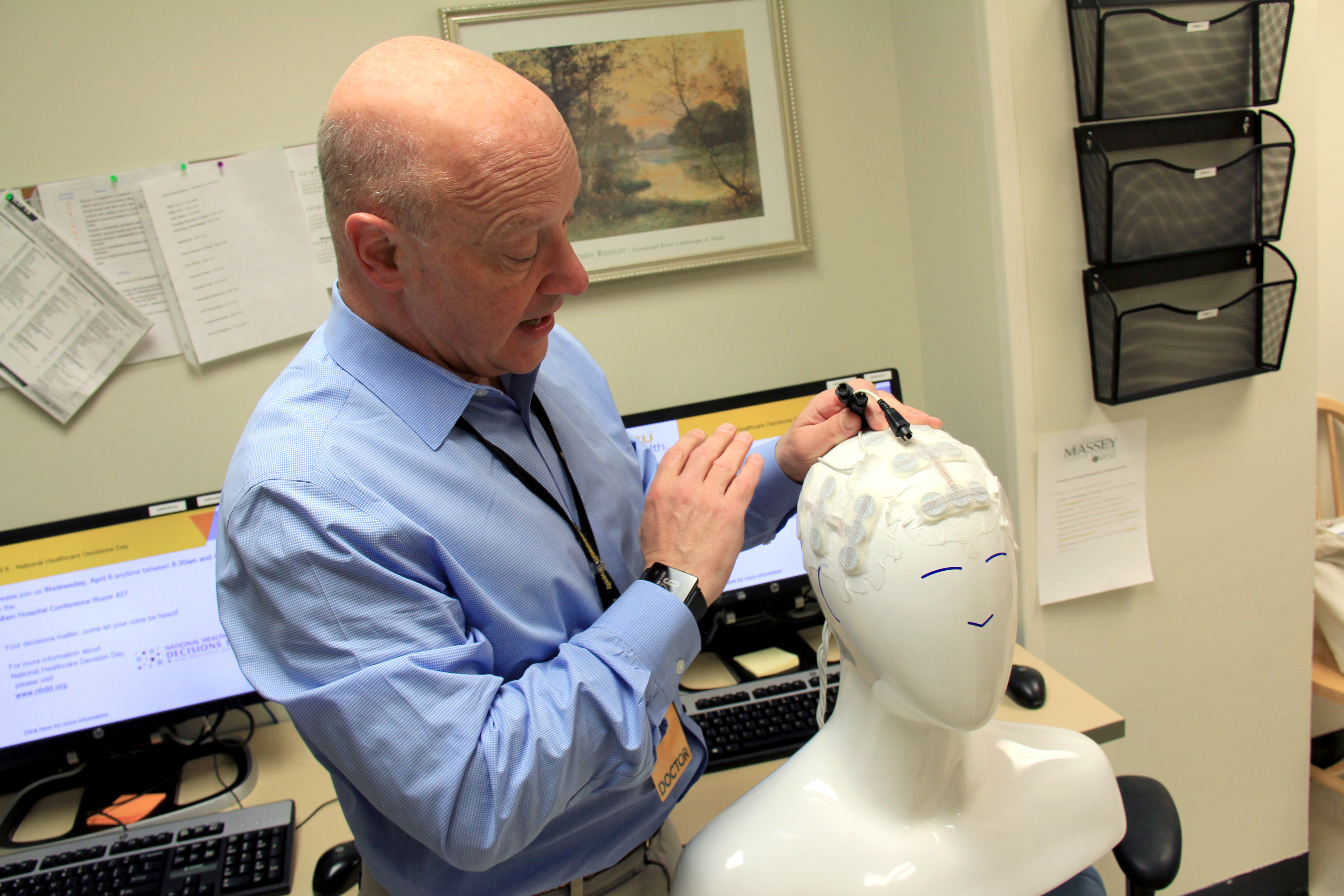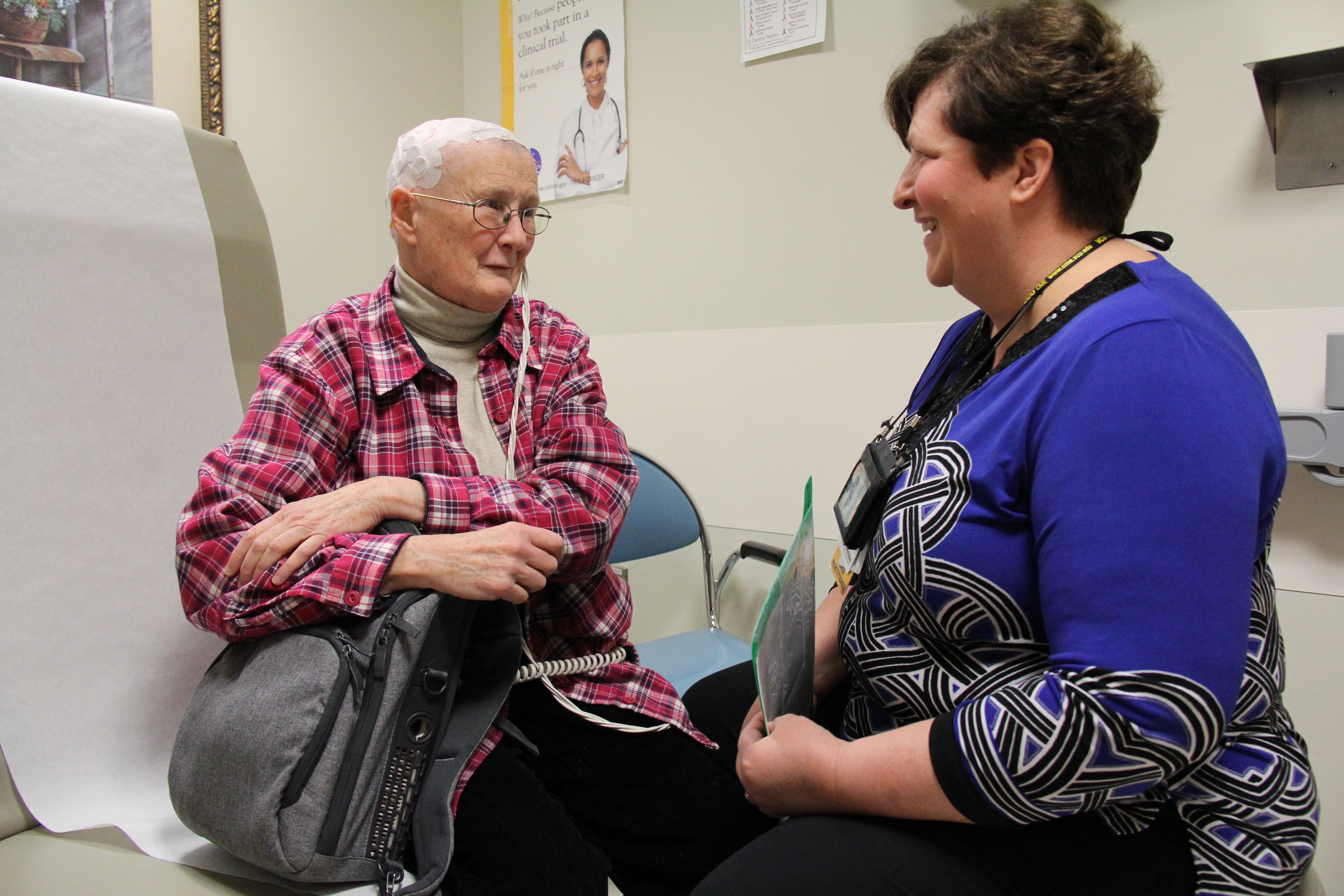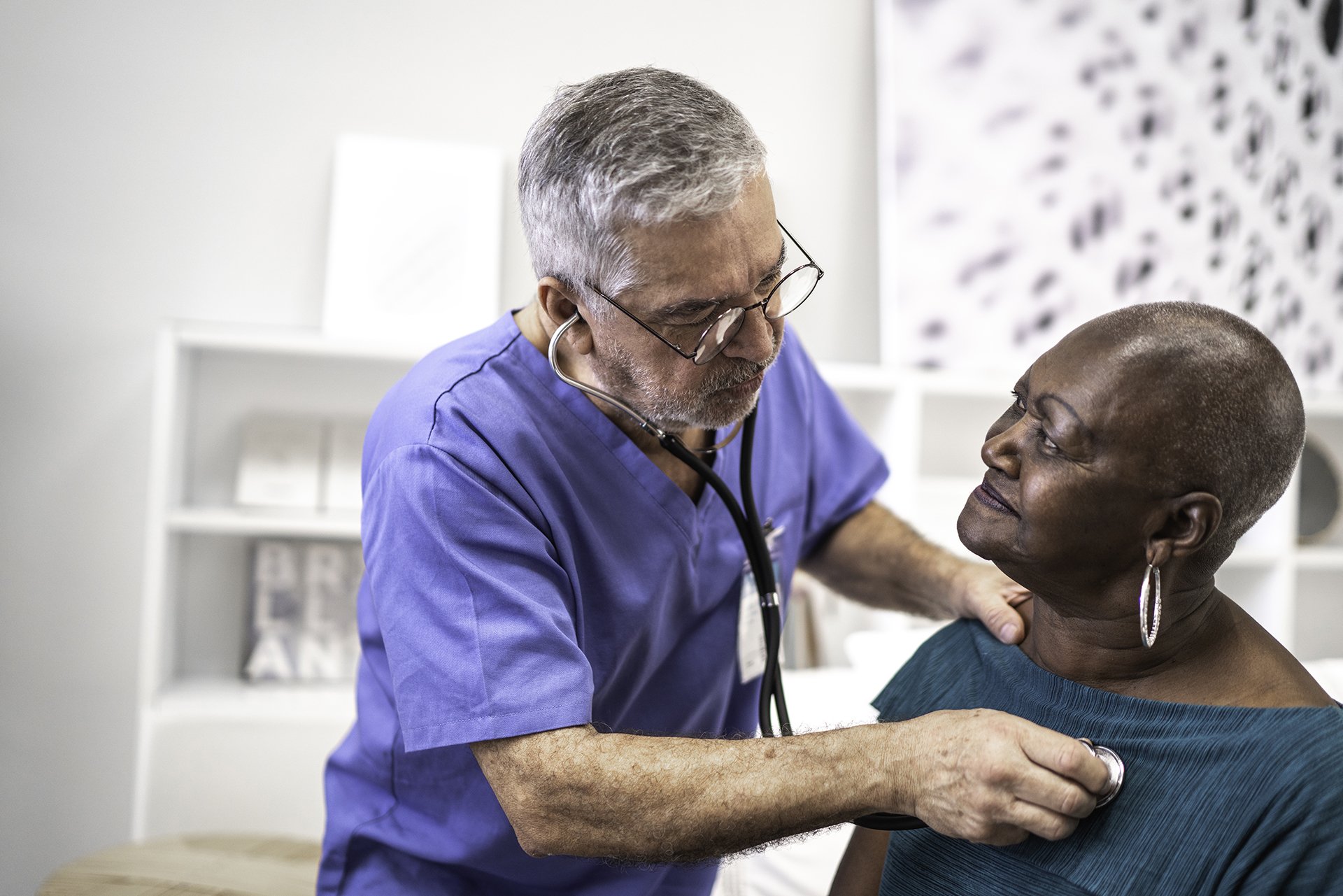Technology
Apr 11, 2016

Glioblastoma multiforme (GBM) is the most common form of primary brain cancer diagnosed in adults and expected to affect more than 12,000 individuals in the U.S. this year alone, according to the American Brain Tumor Association.
For those who are diagnosed with GBM, there have traditionally been very few treatment options ranging from surgery, to radiation and chemotherapy.
Because of the tumors’ typical infiltrating presence in the cerebral hemispheres, it is difficult to remove the entirety of a GBM tumor through a surgical operation. These tumors may grow rapidly inside the brain, often times causing headaches, nausea, vomiting and drowsiness.
Thanks to recent technology called Optune, which is manufactured by Novocure, there is another method available and offered to patients at VCU Massey Cancer Center.
Optune is an FDA-approved, portable, wearable device that sends low intensity electric currents throughout the brain that target GBM cells for the purpose of terminating or reducing cellular growth and division.
Through a set of four adhesive patches, or transducer arrays, tumor-treating fields (TTFields) are transmitted from a battery-powered device worn in a backpack directly through a patient’s scalp over the site of the tumor. The patches should be worn for at least 18 hours a day.
A clinical trial revealed that nearly half of all patients who were treated with TTFields in combination with temozolomide (TMZ), a chemotherapy drug, were alive after two years or longer, compared to just 32 percent of patients who were only treated with TMZ.
The treatment timeline begins four weeks following radiation therapy for proper tumor stabilization, and to ensure that the patient has recovered from any skin reactions due to radiation therapy, reaching up to as long as the method remains effective for a patient after that initial period.
Optune is approved for use for both newly diagnosed and recurrent adult (22 years of age or older) GBM patients. For patients with newly diagnosed GBM, Optune is used together with TMZ. For patients with recurrent GBM, Optune is used alone or in combination with medical therapy.

The device comes with three rechargeable batteries, each of which has a two-to-three-hour life span, and the device is transportation friendly, including in cars or airplanes.
Patients must shave their scalps to most effectively utilize Optune, but the adhesive patches fit comfortably under loose wigs, hats or other head coverings to a point that they are hardly recognizable on a person’s head.
Neuro-oncologist Mark Malkin, M.D., the Williams G. Reynolds Jr. chair of neuro-oncology at Massey Cancer Center, feels that Optune gives patients a sense of control over their tumor because there is a level of participation in the therapy, including the application and removal of the electrodes, periodically shaving one’s own head to allow for positioning of Optune, and engaging in social or physical activity on a daily basis while wearing the device in a backpack.
“I think Optune is empowering, and that’s something that is different than any other therapy we offer GBM patients. Patients lie under an anesthetic during surgery, and they lie under a linear accelerator receiving radiation therapy for six weeks. Optune is different,” Malkin said. “I can’t measure it, but I strongly believe there is positive energy that comes out of it.”
For Malkin, having Optune as an option at Massey allows for him to have a more enhanced discussion with GBM patients about how to orchestrate a sensible plan for their treatment while keeping as many options open as long as possible.
“GBM is typically not a curable situation, but it is a controllable situation and putting things in the right order, and using Optune at the right time in that order, maximizes the time that a patient has options,” Malkin said.
Unlike chemotherapy drugs, Optune does not enter the bloodstream or impact other cells in the body. The only side effect is a redness akin to a mild sunburn under the electrodes, which is easily managed by regularly shampooing the head and repositioning the electrodes every few days.
Because neuro-oncologists Malkin and Zhi-jian Chen, M.D., Ph.D., and nurse practitioner Dana Blake, N.P., are all certified to prescribe Optune, Massey can expedite the process for a patient to begin treatment. Previously, a patient’s MRI results had to be sent to Novocure’s headquarters for treatment planning. Now, the treatment plan can be generated in house, getting a patient started on treatment up to a week sooner.
At Massey Cancer Center and elsewhere at VCU Health, there are several providers who can and do prescribe Optune for patients.
Written by: Blake Belden
Center News & Funding, Research, Prevention & Control, Clinical, Technology
Breast imaging expert explains how new FDA mammogram rules help patients make informed decisions about their careSep 27, 2024
Research, Clinical, Technology
VCU team has designs on a game-changer in women’s cancer treatmentAug 29, 2024
Community Engagement & Health Equity, Clinical, Prevention & Control, Technology
New mobile cancer screening initiative provides more access for rural VirginiansJul 24, 2024

Treatments in clinical trials may be more effective or have fewer side effects than the treatments that are currently available. With more than 200 studies for multiple types of cancers and cancer prevention, Massey supports a wide array of clinical trials.

Massey supports hundreds of top cancer specialists serving the needs of our patients. Massey’s medical team provides a wealth of expertise in cancer diagnosis, treatment, prevention and symptom management.